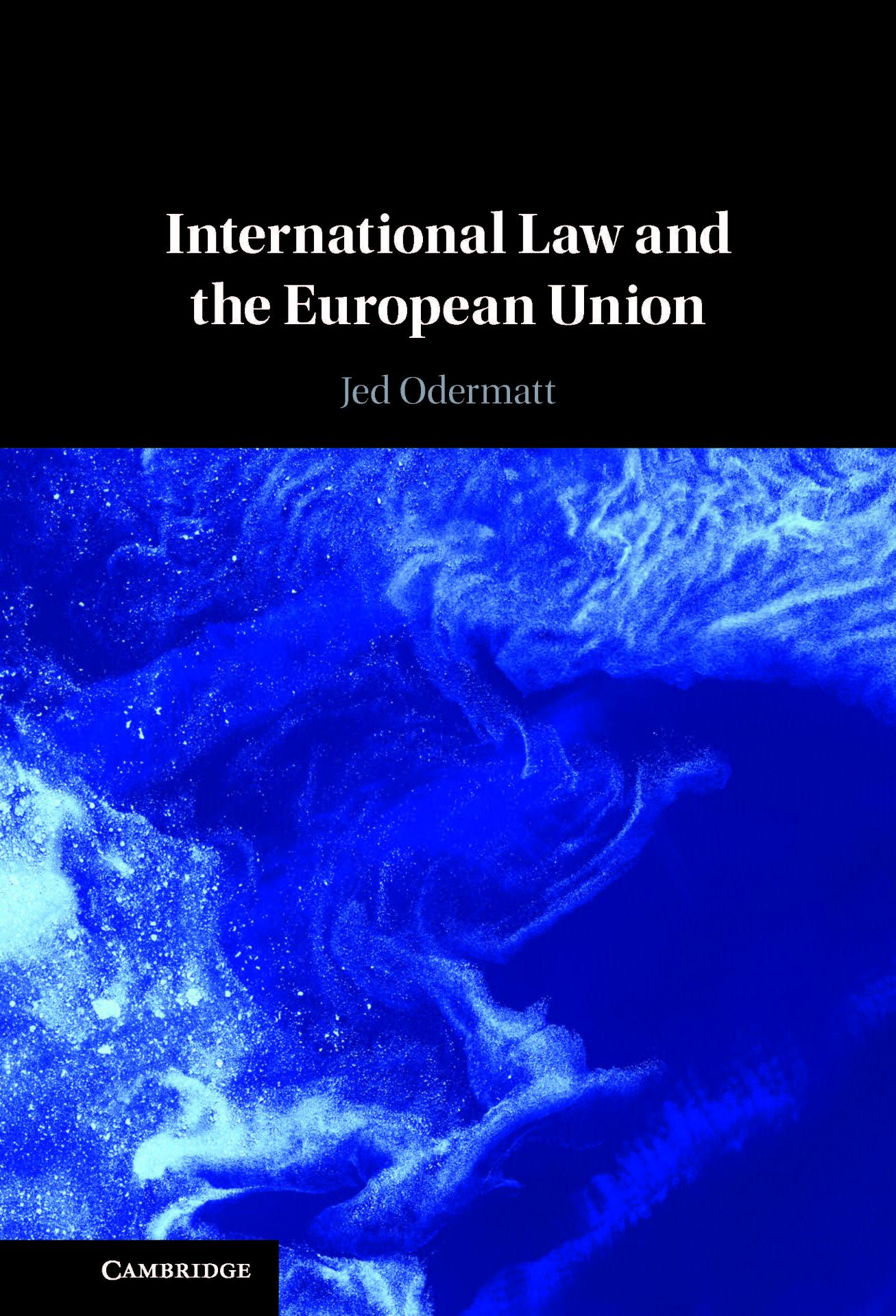The European Union has become an ever more visible and active player at the international level. Legal scholarship has addressed this phenomenon. The field of EU external relations law discusses the legal issues that arise from the EU’s activity on the international plane. Much of this literature is focused on the internal issues that the European Union and its Member States face. In International Law and the European Union, I sought to explore the issues that arise, not only for the EU legal order, but also for international law and for non-EU states.
To do so, the book integrates the perspectives of European Union law and of international law. In researching the book, I quickly realized that there were diverging views about the very nature of the EU and its legal order. As I discuss in Chapter 1 on ‘The European Union in International Law’ both legal scholarship and practice present an ‘EU law’ view and an ‘international law view’ on the nature of the European Union. The EU law view tends to see the EU as a unique legal order, one that has escaped from its international law origins. It is highly influenced by the narrative, established by the Court of Justice of the EU in van Gend & Loos and later judgments, of the Union as a ‘new legal order’. This internal narrative remains contested in international law scholarship, which tends to view the Union as a type of international organization, albeit one that has developed a number of unique features. The aim of the book is not to argue which of these views is ‘correct’. Rather, it accepts that the EU is a unique type of legal entity, and explores how international law concepts and principles have adjusted and respond to these claims. Rather than provide a unitary theory of the European Union that could address the types of legal clashes and conflicts that arise under EU and international law, it explores the ways that public international law addresses legal subjects other than states.
International Law and the European Union demonstrates, using multiple examples, how the EU is having an effect on the international legal order. It does so by examining the EU’s involvement in, and influence on, the development of customary international law (chapter 2), the law of treaties (chapter 3), international organizations (chapter 4), international dispute settlement (chapter 5), and the law of international responsibility (chapter 6). It shows that the ‘EU law view’ and ‘new legal order’ narrative only makes sense when applied to the internal legal sphere. When the EU interacts with other subjects of international law, such as when it takes part in international dispute settlement, or when it seeks to shape the development of international law principles (such as the Articles on Responsibility of International Organizations), this view is only partially accepted. The special nature of the EU and EU law is most likely to be accepted in circumstances where the Union is in a stronger negotiating position, such as when it concludes international agreements. The book describes, for example, how the EU’s treaty partners have accepted certain ‘EU-specific’ clauses in treaties concluded with the Union. Yet in other fields, such as when the Union participates in the activity of the United Nations or intergovernmental organizations, the Union tends to be viewed as (yet another) international organization or bloc.
International law scholarship once viewed the Union as a model for the functioning of the international legal order. Union law could provide inspiration for how international law could be integrated into the domestic legal orders of states, of how international law could provide rights to individuals, or as a way to address international law’s democratic deficit. Discussions today about the European Union from a public international law perspective do not present the Union in such a positive light, and are more likely to focus on the EU’s resistance to international law. The EU court’s resistance towards the system of investment arbitration or to the European Convention on Human Rights, are put forward as such examples. I have argued that the focus on the ‘autonomy’ of the EU legal order can be viewed as a type of ‘adolescent stage’ in the maturity of the Union legal order, a period during which it has to learn to live alongside other subjects of international law.
Does it matter that there are such divergent views of the EU? The concept of ‘identity’ has been the focus of renewed attention among International Relations scholars.[1] It explains how actions can be shaped by the actor’s self-understanding within wider social arrangements. Identity theory has also been applied in the context of international organizations.[2] The actions of the EU can also be shaped by its self-perception; the EU has developed a set of beliefs and attitudes about itself: along with the new order narrative, its self-perception is of a body dedicated to democracy, human rights, and the rule of law. In addition to this self-perception, identity is further shaped, challenged, and given meaning by the perceptions of others.[3] The EU finds its self-perception challenged when it steps out into the world and engages other actors, which have a different view of the EU and the nature of EU law.
International Law and the European Union also argues that the diverging views of the EU and its legal order do not simply stem from different legal interpretations. They are also a manifestation of divergences of values and interests. Many of the legal disagreements or clashes discussed in the book are caused by tensions about which legal order is ‘normatively’ superior. To those associated with the EU law view and the European project, EU law is put forward as more democratic and better able to protect fundamental rights and values. To those associated with the international law project, international law is viewed as the superior legal order, and can be used to challenge the validity of certain EU acts that allegedly violate international law. In fields where ‘clashes’ have emerged, such as in the fields of individual sanctions, data protection, animal welfare, climate change and investment arbitration, there are underlying questions about which legal order is best equipped to govern these topics.
The greatest challenge in writing this book was to find a balance between these competing and often conflicting perspectives. It can be tempting to accept either the EU law or international law view, since each offers an internally consistent narrative, supported and reinforced by a specialist academic and legal community. International Law and the European Union seeks to show to the international lawyer how and why certain aspects of the Union’s claims to uniqueness should be taken seriously. It shows to the Union lawyer how and why such claims to uniqueness have been resisted. Yet the result is that international law can and has adjusted to this strange legal entity, which has had a subtle but important influence on the development of international law.
For more information about research on the EU and international law at City Law School, visit the Institute for the Study of European Law andthe International Law and Affairs Group
[1] See e.g. B. Bucher and U. Jasper, ‘Revisiting ‘identity’ in International Relations: From Identity as Substance to Identifications in Action’ (2016) European Journal of International Relations 1.
[2] See S. Cho, ‘An International Organization’s Identity Crisis’ (2014) 34 Northwestern Journal of International Law & Business 359, 379 using identity theory to understand the autonomy of international organizations over time. “An organizational identity is shaped by an IO’s conscious interactions with the environment and guided by an organization’s role expectation, as well as the expectations that the organization perceives from its environment (society).”
[3] E. Elisabeth Johansson-Nogués, ‘Is the EU’s Foreign Policy Identity an Obstacle? The European Union, the Northern Dimension and the Union for the Mediterranean’ (2009) 9 European Political Economy Review 24, 27.


Leave a Reply